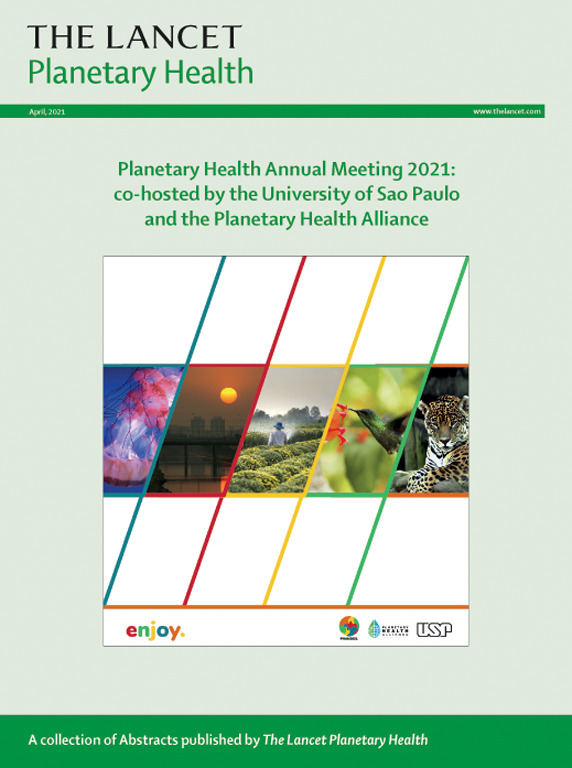Quantifying the short-term mortality effects of wildfire smoke in Europe: a multicountry epidemiological study in 654 contiguous regions
IF 21.6
1区 医学
Q1 ENVIRONMENTAL SCIENCES
引用次数: 0
Abstract
Background
Fine particulate matter (PM2·5) from wildfire smoke could be more harmful to human health than that from other sources. Evidence of the short-term association between wildfire-related PM2·5 and mortality in Europe remains sparse, leading to uncertainties in the fire-related PM2·5 mortality burden.
Methods
In this retrospective, multicountry epidemiological study, we used the EARLY-ADAPT database to obtain daily mortality records in 654 contiguous subnational regions from 32 European countries, representing a population of 541 million individuals. We combined these data with daily estimates of fire-related and non-fire-related PM2·5 from the System for Integrated Modelling of Atmospheric Composition model during 2004–22. Regional and pooled associations between daily fire-related PM2·5 and all-cause and cause-specific mortality were quantified using quasi-Poisson regression. We compared deaths attributable to fire-related PM2·5 using relative risks (RRs) specific to fire-related PM2·5 versus total PM2·5.
Findings
Our study data included 95⸱3 million daily deaths for all-cause mortality, 19⸱5 million daily deaths for cardiovascular mortality, and 3⸱9 million daily deaths for respiratory mortality from Jan 1, 2004, until the latest available year in each country. Pooled cumulative (lags 0–7) RRs associated with a 1 μg per m3 increase in fire-related PM2·5 were 1⸱007 (95% CI 1⸱004–1⸱010) for all-cause mortality, 1⸱009 (1⸱006–1⸱013) for cardiovascular mortality, and 1⸱013 (1⸱008–1⸱019) for respiratory mortality. RRs were larger for fire-related PM2·5 than for non-fire-related PM2·5. Using RRs for total (fire-related and non-fire-related) PM2·5 underestimated the fire-related PM2·5 attributable mortality by 93%.
Interpretation
Associations with all-cause and cause-specific mortality were larger for fire-related compared with non-fire-related PM2·5. Assuming wildfire PM2·5 has the same effect as total PM2·5 substantially underestimates the mortality burden of wildfire smoke.
Funding
The European Commission, EU Horizon Europe, the European Research Council, and the Research Council of Finland.
量化野火烟雾对欧洲短期死亡率的影响:在654个相邻地区进行的多国流行病学研究。
背景:野火烟雾中的细颗粒物(PM2·5)可能比其他来源的细颗粒物对人体健康的危害更大。在欧洲,与野火有关的PM2·5与死亡率之间的短期关联证据仍然很少,这导致了与野火有关的PM2·5死亡率负担的不确定性。方法:在这项回顾性的多国流行病学研究中,我们使用EARLY-ADAPT数据库获取来自32个欧洲国家的654个连续的次国家区域的每日死亡率记录,代表了5.41亿人口。我们将这些数据与2004-22年期间大气成分综合模拟系统(System for Integrated Modelling of Atmospheric Composition)模式中与火灾相关和与非火灾相关的PM2·5的每日估算值结合起来。使用准泊松回归量化了每日火灾相关pm2.5与全因死亡率和病因特异性死亡率之间的区域和汇总关联。我们使用火灾相关pmm2·5与总pmm2·5特异性的相对风险(rr)比较了火灾相关pmm2·5导致的死亡人数。研究结果:我们的研究数据包括从2004年1月1日起至每个国家可获得的最新年份,每天95,⸱300万全因死亡率死亡,每天1,9⸱500万心血管死亡率死亡,每天3,⸱900万呼吸系统死亡率死亡。池累积(鹿)滞后的RRs与增加1μg / m3算命大师PM2·5 1⸱007 (95% CI⸱1⸱004 - 010),全因死亡率⸱009(1⸱⸱006 - 013)对心血管死亡率,和013⸱⸱008 - 1⸱(019)呼吸道死亡率。与火灾相关的pmm2·5的rr大于与非火灾相关的pmm2·5。使用总(与火灾有关和非与火灾有关)pmm2·5的rr,低估了与火灾有关的pmm2·5可归因死亡率93%。解释:与非火灾相关的PM2·5相比,与火灾相关的PM2·5与全因和病因特异性死亡率的相关性更大。假设野火PM2·5与总PM2·5具有相同的作用,大大低估了野火烟雾的死亡率负担。资助:欧盟委员会、欧盟地平线欧洲、欧洲研究理事会和芬兰研究理事会。
本文章由计算机程序翻译,如有差异,请以英文原文为准。
求助全文
约1分钟内获得全文
求助全文
来源期刊

Lancet Planetary Health
Multiple-
CiteScore
28.40
自引率
2.30%
发文量
272
审稿时长
8 weeks
期刊介绍:
The Lancet Planetary Health is a gold Open Access journal dedicated to investigating and addressing the multifaceted determinants of healthy human civilizations and their impact on natural systems. Positioned as a key player in sustainable development, the journal covers a broad, interdisciplinary scope, encompassing areas such as poverty, nutrition, gender equity, water and sanitation, energy, economic growth, industrialization, inequality, urbanization, human consumption and production, climate change, ocean health, land use, peace, and justice.
With a commitment to publishing high-quality research, comment, and correspondence, it aims to be the leading journal for sustainable development in the face of unprecedented dangers and threats.
 求助内容:
求助内容: 应助结果提醒方式:
应助结果提醒方式:


